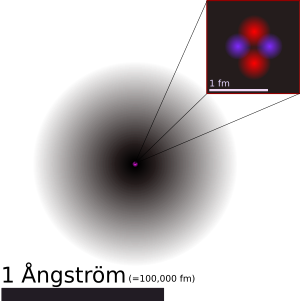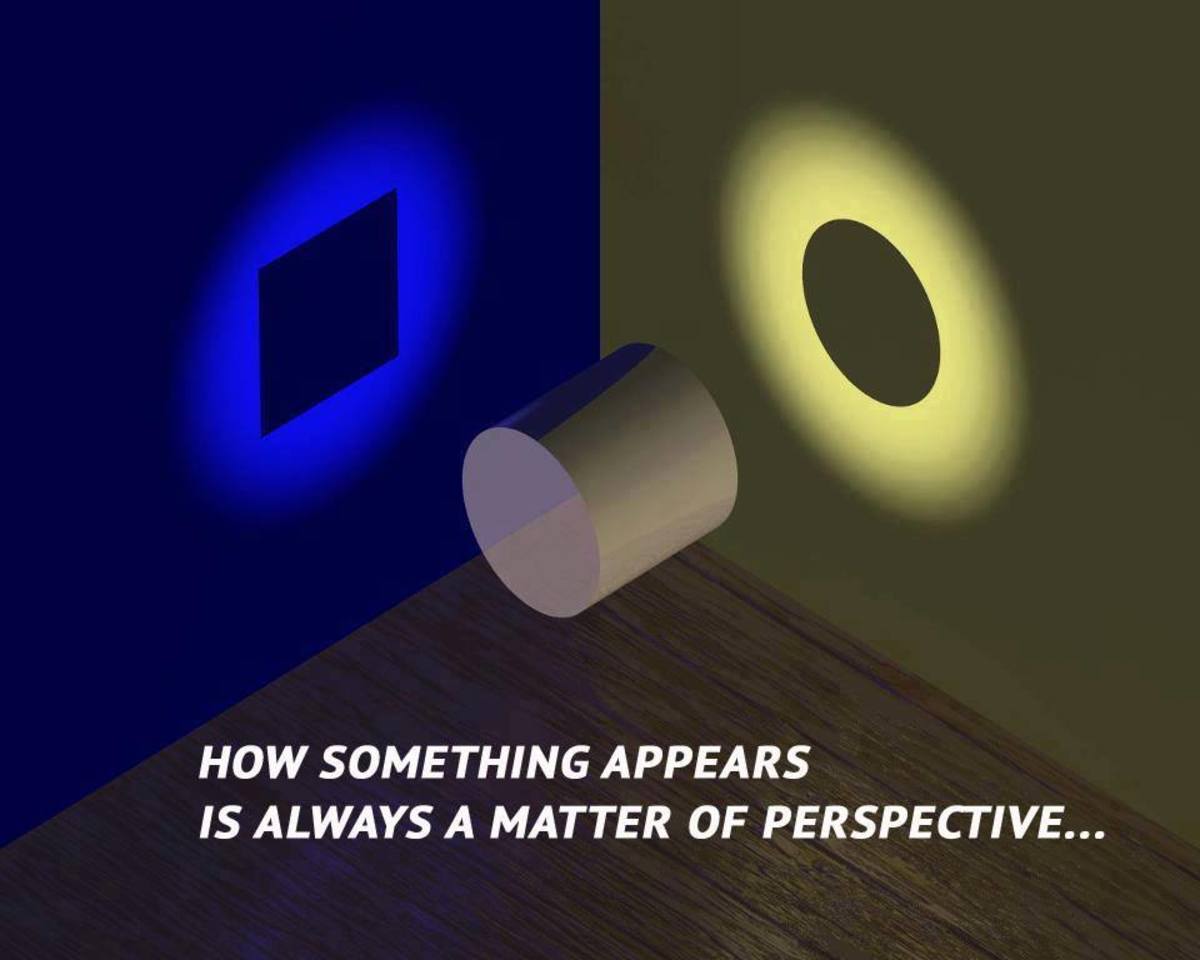Macroverse VS. Microverse
Old Idea & Notion of an Atom

Macroverse VS. Microverse
What is quantum mechanics?
Simply put, quantum mechanics is the study of matter and radiation at an atomic level.
Why was quantum mechanics developed?
In the early 20th century some experiments produced results which could not be explained by classical physics (the science developed by Galileo Galilei, Isaac Newton, etc.). For instance, it was well known that electrons orbited the nucleus of an atom. However, if they did so in a manner which resembled the planets orbiting the sun, classical physics predicted that the electrons would spiral in and crash into the nucleus within a fraction of a second. Obviously that doesn't happen, or life as we know it would not exist. (Chemistry depends upon the interaction of the electrons in atoms, and life depends upon chemistry). That incorrect prediction, along with some other experiments that classical physics could not explain, showed scientists that something new was needed to explain science at the atomic level.
If classical physics is wrong, why do we still use it?
Classical physics is a flawed theory, but it is only dramatically flawed when dealing with the very small (atomic size, where quantum mechanics is used) or the very fast (near the speed of light, where relativity takes over). For everyday things, which are much larger than atoms and much slower than the speed of light, classical physics does an excellent job. Plus, it is much easier to use than either quantum mechanics or relativity (each of which require an extensive amount of math).
What is the importance of quantum mechanics?
Quantum mechanics can describe some things, while classical physics cannot.
Macroverse VS. Microverse
Long ago, an unknown personage of ancient origin, according to the histories out of southern Persia, came into the Greek and Nile areas and began writing divine instructions for understanding the cosmos. These rules were filtered down throughout most of the rest of western culture, and a similar school began in the Far East oriented around the concepts of light and dark. Although the name of this person has been forgotten by the ages, his association with certain local concepts of deity, such as the baboon or ibis in Egypt and the messenger in Greece, has preserved the tradition he long ago began. The most famous of his dictums was, “as above, so below.” (Masonic) During the Roman era this philosophy was present in the economic division of patrician and plebian, while the essenes and nazorenes described themselves as “children of light and darkness.” However during the European dark ages this concept was rediscovered by alchemists, and the terms “macrocosm” (describing the cosmos) and “microcosm” (the unit), were derived.
Only now are we finding similarities to the cauduces or staff of the healer and the double helix of genetic DNA as the microcosm and the zen garden of forking paths and the filaments, walls and voids of the universe as the macrocosm. The pattern of phi/pi clearly emerges, where phi represents division and pi unification. Since division (as between filaments, nerves, genes during RNA replication or quantum waves) and unification (as for individual celestial spheres, the gamete progenerative cells, DNA packing inside of the nucleus in ribosomes or quantum particles) are obviously inverse of one another, like dark and light, it is cognitively dissonant for the unenlightened mind to perceive them as equivalent. Therefore, the idea accepted by the Greek philosophers, who began the first philosophical colleges in light of the wisdom of the ancient law giver, was that man must be separated from the cosmos in the same way that an idea itself — such as the idea of self— is separate from the ideal realm of the mind. This makes sense, because a light source, even one as prevalent as the sun, is only emitting rays into the darkness of the void, in the same way that ideas generate lines of reasoning that progress into unknown dreams. In this way the macroverse became associated with the realm of ideal — where phi and pi are one geometry, and the microverse with the real, given or material. Currently, scientists are seeking to discover a unified field theory, or grand unified theory (GUT) of everything. Until chaos theory became popular in USA from the mid-1970s to the early 1990’s these theories consisted of debates between MACHOs and WIMPs, or strong and weak centers of gravity.
The increased government funding of superconducting super colliders and magnetic particle accelerators following the Mideast oil embargo, however, allowed early computer program using, fractal generating mathematicians to exchange ideas with quantum physicists and this is how string theory began. According to string theory, the universe is comprised of a finite number of vibrating frequencies, and these are hyperspace dimensions, coiled up very tightly, that cause all pattern in matter. Chaos theory, which is the attempt to make the mathematically abstract axiom of the uncertainty principle more elegant using fuzzy logic systems, and string theory both miss the mark of Einstein’s own attempts at a unified field theory involving gravity, however Einstein was quick to admit that his own theories, too, were imperfect, and remained unconvinced of a gravitational constant as unifying ether.
Combined, these theories would spin off into the even more modern theories of the holographic universe, based on the Hindu Maya — an energy illusion, and quantum consciousness, attempting to account for esp. Another modern theory, called M-theory, doubles the dimensionality of the string frequency fabric of spacetime, making the chaos-fractal vibrations into waves of potential, passing effect through probabilities, and calling them dimensional branes. Each one of these theories is satisfactory in its data, however each is incomplete. The longer scientists wait to reveal to themselves what some ancients already knew long ago, the more these GUTs will pile up, until eventually we will need a GUT of GUTs. It is within the reach of every one of us to know that everything is one, and this generates wide belief in one god, but the mechanisms necessary to prove in order to convince others of the ways in which different things are similar elude the grasp of most, tainted as this is by the superstition of good routine and evil change.
The six fundamental questions of rhetorical reasoning lead us inevitably to a description of the universe as a dimensionally resonant, holognomonic metaform, an effect being the inverse reaction to a cause on each swing of the temporally motivated pendulum of quantum uncertainty.
Related Science Topics of Interest:
http://hubpages.com/hub/Microwave-Hyper-Quanta-Faster-Than-Light
http://hubpages.com/hub/The-Concept-of-the-Mind-Directing-Energy-in-Physics-Zero-Point-Energy-Field
http://hubpages.com/hub/What-are-Fractals-Why-Important
http://hubpages.com/hub/Retrocausality-Reverse-Causality-Today-Effects-the-Past








